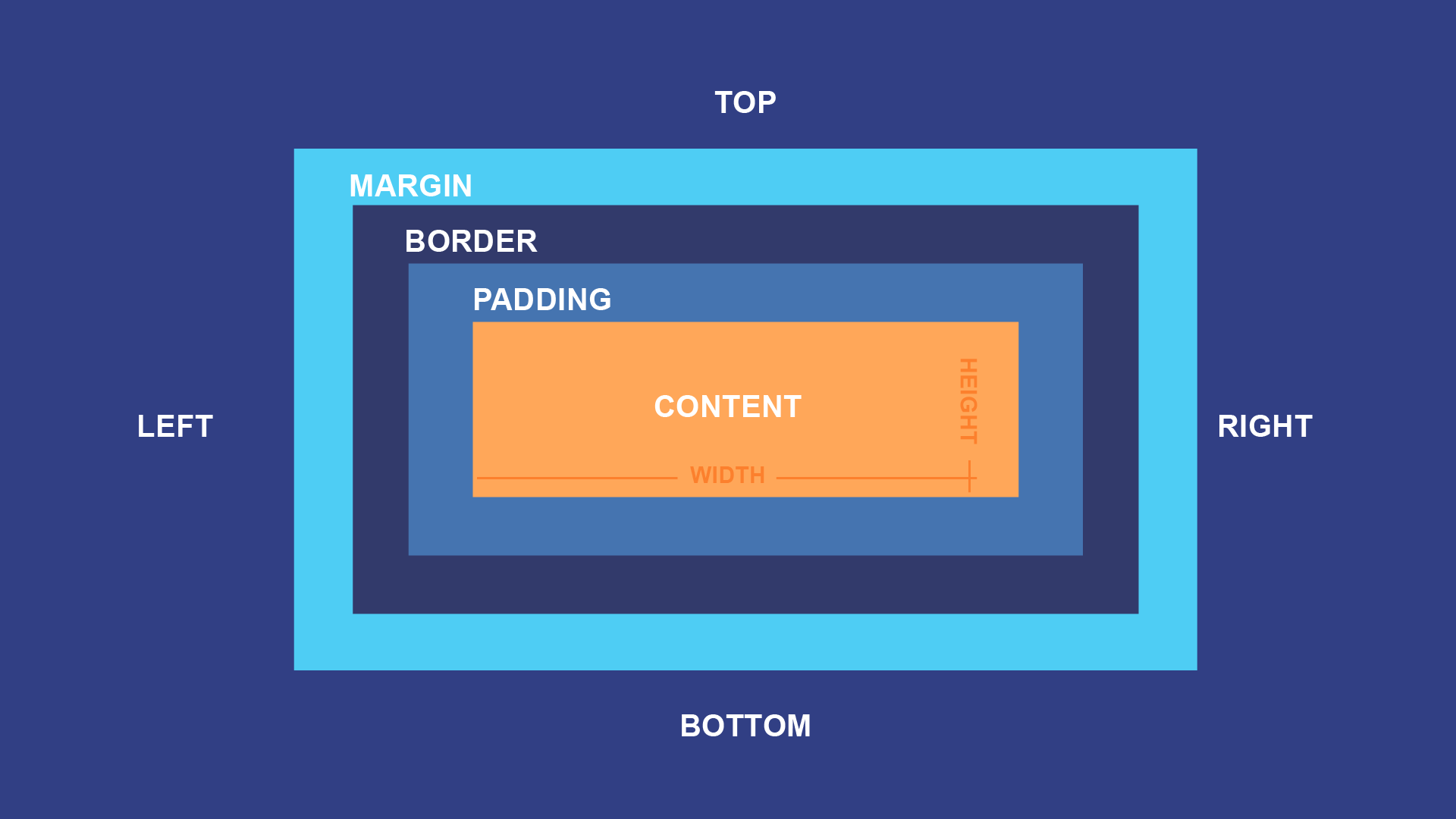Box Model in CSS
Each element on a web page corresponds to a rectangular area known as a box.
The box includes:
- 1 Content — the actual content of the element;
- 2 Padding — the space between the content and the border;
- 3 Border — the line surrounding the content and padding;
- 4 Margin — the space outside the border, separating the element from others.

The appearance of a box on the page is largely determined by its type or the type of its parent element.
Block-level boxes start on a new line and take up the full width of their parent element. Tags like p, div, and h1 are block-level elements by default.
Inline boxes are placed next to each other in a single line, and their width depends on the content. By default, a, span, and b are inline elements.
Flow, Grids, and Page Layout
The interaction between boxes and their positioning on a page is determined by the concept of “flow”. Flow can be controlled by changing the box types and their default properties.
A grid represents a structure that defines the placement of major blocks on a webpage. These typically include the header, footer, main content, sidebar, and various sections. The number of elements in a grid is usually fixed, and their sizes are defined according to the layout.
A layout is a graphical representation of a web page created by a designer. It serves as a blueprint for the developer when building the page.
Layouts are usually made in Figma or Photoshop.
